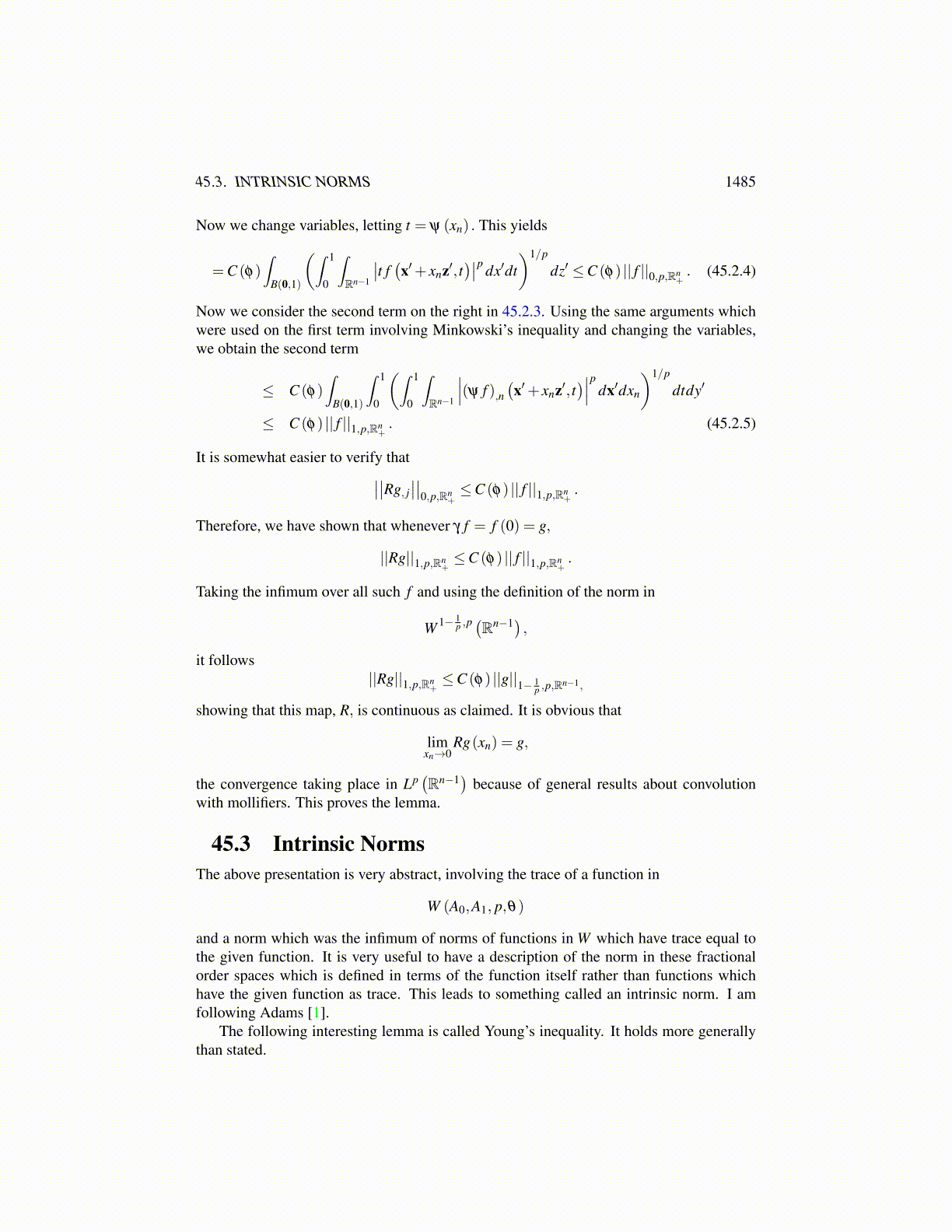
45.2. A RIGHT INVERSE FOR THE TRACE FOR A HALF SPACE 1485
and (∫∞
0|| f (t)||p1,p,Rn−1 dt
)1/p
+
(∫∞
0
∣∣∣∣ f ′ (t)∣∣∣∣p0,p dt)1/p
< ∞.
Then taking a measurable representative, we see f ∈W 1,p(Rn+
)and f,xn = f ′. Also, as an
equation in Lp(Rn−1
), the following holds for all t > 0.
f (·, t) = f (0)+∫ t
0f,xn (·,s)ds
But also, for a.e. x′,the following equation holds for a.e. t > 0.
f(x′, t)= γ f
(x′)+∫ t
0f,xn
(x′,s)
ds, (45.1.1)
showing that
γ f = f (0) ∈W 1− 1p ,p(Rn−1)≡ T
(W 1,p (Ω) ,Lp (Ω) , p,
1p
).
To see that 45.1.1 holds, approximate f with a sequence from C∞(Rn+
)and finally
obtain an equation of the form∫Rn−1
∫∞
0
[f(x′, t)− γ f
(x′)−∫ t
0f,xn
(x′,s)
ds]
ψ(x′, t)
dtdx′ = 0,
which holds for all ψ ∈C∞c(Rn+
). This proves the lemma.
Thus taking the trace on the boundary loses exactly 1p derivatives.
45.2 A Right Inverse For The Trace For A Half SpaceIt is also important to show there is a continuous linear function,
R : W 1− 1p ,p(Rn−1)→W 1,p (Rn
+
)which has the property that γ (Rg) = g. Define this function as follows.
Rg(x′,xn
)≡∫Rn−1
g(y′)
φ
(x′−y′
xn
)1
xn−1n
dy′ (45.2.2)
where φ is a mollifier having support in B(0,1) .
Lemma 45.2.1 Let R be defined in 45.2.2. Then Rg∈W 1,p(Rn+
)and is a continuous linear
map from W 1− 1p ,p(Rn−1
)to W 1,p
(Rn+
)with the property that γRg = g.
Proof: Let f ∈W 1,p(Rn+
)be such that γ f = g. Let ψ (xn) ≡ (1− xn)+ and assume f
is Borel measurable by taking a Borel measurable representative. Then for a.e. x′ we havethe following formula holding for a.e. xn.
Rg(x′,xn
)=
∫Rn−1
[ψ (xn) f
(y′,ψ (xn)
)−∫
ψ(xn)
0(ψ f ),n
(y′, t)
dt]
φ
(x′−y′
xn
)x1−n
n dy′.